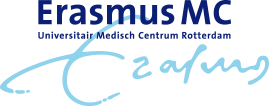Stepping forward
Untreatable neurological movement disorders form an increasing burden in our ageing society. To facilitate scientific research of the causes of and cures for movement disorders, a public-private partnership has been established between Erasmus MC, LUMC and Noldus. Together they will develop, test and implement more precise techniques for measuring gait patterns in mice. These will be combined with site-specific neural stimulations and genetic therapy to increase the understanding of brain control in health and disease, and explore new routes for curing currently untreatable movement disorders.
In the Netherlands alone, over 200,000 people rely on a wheelchair. There are many reasons for this, including hundreds of different neurological disorders that can lead to walking impairments. Most of these disorders can also cause other disabilities, like inability to reach or to speech. Many movement disorders are progressive and eventually lethal. Despite the severity of these diseases, effective therapies are rare.
Several ideas for therapies do exist, however, and they all start by understanding what is happening. The partners will further develop the systems for the quantification of gaiting patterns in mouse models, and use these improved versions to describe the impact of brain stimulation as well as genetic intervention in a genetic movement disorder (spinocerebellar ataxia type 3, SCA3).
The combination of fundamental and applied biomedical research with improved imaging and sophisticated computer analyses will offer researchers worldwide better tools to study neural control of locomotion in health and disease. In particular, the genetic approach to stop disease progress in SCA3 is a potential game changer for currently untreatable genetic movement disorders.



